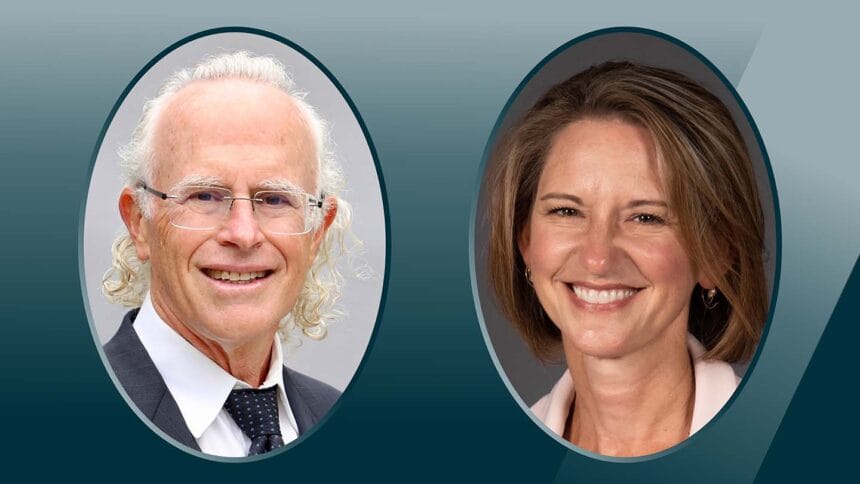
Skilled nursing facilities are no longer settings just for aging older adults. Residents are both younger and/or with far more medically and socially complex needs.
Experiences during the pandemic confirmed the importance of having adequate staffing based on facility or resident needs and of hiring high-quality, well-trained staff. Higher numbers do not guarantee optimal staff utilization and lower numbers do not preclude it.
While numbers alone are easy to regulate, they don’t guarantee optimal care. Decisions about staffing levels need to consider the complexity and acuity of a facility’s population, and the functional level of residents and services required.
Determining adequate staffing is much more complex than a simple resident-to-worker ratio based on national case-mix data sources. It involves integrating the entire care team in the delivery of care to complex and vulnerable residents. That requires an interdisciplinary approach to leadership and operational decision making.
One of the most important elements in the proposed rule is the focus on the “Facility Assessment.” Some of the key components of the assessment include ensuring: appropriate training and ongoing skills development according to facility resident populations and acuities; the critical nature of career and educational development of staff; and the essential need for leadership, quality, competence and engagement of medical directors and adjunct attending teams of physicians and advanced practice practitioners. An efficient methodology for assessing and documenting the necessary resources and staff that the facility requires is also essential.
AMDA-The Society for Post-Acute and Long-Term Care Medicine represents the community of medical directors, physicians, nurse practitioners, physician assistants and other healthcare professionals who work in the various post-acute and long-term care (PALTC) settings. The vantage point from which we view the Centers for Medicare & Medicaid Services’ recent proposed staffing rule comes from an evidence-based and experiential perspective that advocates for a framework that supports excellent care. Our position paper on staffing was updated in August of 2022 and provides insight into this important topic.
Medical directors have an explicitly mandated regulatory responsibility for the “implementation of resident care policies” and “the coordination of medical care” in US nursing homes. Creating staffing plans that allow the time and include the team members with necessary professional knowledge and skills to provide appropriate care must become the norm.
Medical directors, such as those certified by the American Board of Post Acute and Long-Term Care Medicine (ABPLM), are important participants in the facility assessment to help ensure a facility can provide high-quality care to its resident population. This is one of the reasons that we’re thrilled that the public disclosure of medical director information was included in the recent Transparency Final Rule.
Our members have indicated that many of their facilities, including those with 5-star ratings, do not have a registered nurse onsite 24 hours a day, seven days a week. Many facilities rely on licensed nurse (LPN/LVN) staffing for around-the-clock coverage including weekends.
As medical directors, we have firsthand experience that LPN/LVNs are important members of the care delivery team and believe that any lack of evidence of their relationship with quality is due to a paucity of well-constructed research studies. LVN/LPN staffing ratios consistent with the present practice in nursing homes across the country must be maintained, lest the proposed rule have the unintended consequence of having LVNs/LPNs terminated and replaced by either CNAs or RNs (depending on the specific circumstance of existing staffing levels at individual facilities).
We also suggest there are many ways to meet various staffing needs, including but not limited to sharing staff with other local health settings, accessing telehealth providers and nurses, volunteers, and considering other categories of employees such as activities specialists, medication aides, feeding assistants and chaplains. Facilities could include such novel and creative ideas in their staffing plan/facility assessment.
Much about successful staffing relates to optimal organization and utilization of staff, in addition to effective leadership styles.
The presence of RNs in facilities is desirable but does not address the need for adequate numbers of other staff to engage with residents in important and necessary ways. There are a variety of policy strategies to enhance recruitment and retention of critical workers of all disciplines, including:
- Enhanced focus within the educational system to develop enthusiasm for working in the PALTC setting
- Financial incentives for all disciplines working in PALTC, such as student loan forgiveness, affordable housing stipends, childcare credits, longevity bonuses and pathways to citizenship
- Leadership development for nursing staff competencies and team skills, including CNA career ladders
As medical directors and healthcare professionals, we recognize that there are financial and workforce factors in play. However, our first and foremost obligation is to advocate for high-quality care.
As professionals dedicated to providing excellent care to our most vulnerable residents, we will continue to advocate for staffing levels that are both clinically appropriate and safe.
Michael Wasserman, MD, CMD, is a member of the Board of Directors for AMDA-The Society for Post-Acute and Long-Term Care Medicine.
Victoria Walker, MD, CMD, chairs AMDA’s Public Policy Committee.
The opinions expressed in McKnight’s Long-Term Care News guest submissions are the author’s and are not necessarily those of McKnight’s Long-Term Care News or its editors.
Have a column idea? See our submission guidelines here.






